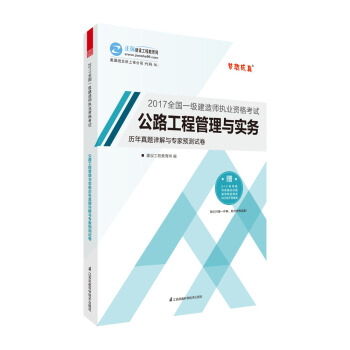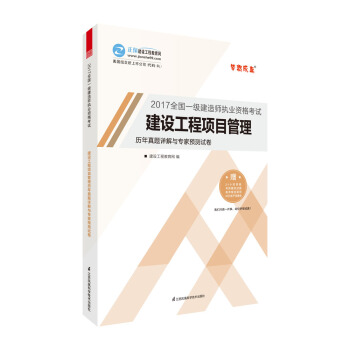具體描述
內容簡介
《圖解人類景觀:環境塑造史論(修訂版)》是一部被譽為景觀建築師必讀的經典著作,也是景觀學、風景園林及相關專業的本科生、研究生應備的教科書。全書共分兩部分:第一部分完整地介紹瞭從史前到17世紀末的人類代錶景觀。作者在縱覽瞭28種人類文化現象後,先簡短介紹每一種文化或文明的背景,再說明它們是如何以景觀的語匯呈現,最後以一係列的圖片證明。古老的文明地區,如古代美索不達米亞、古希臘、古羅馬、中國、古印度、哥倫布之前的美洲世界及文藝復興後的西方世界等,都是《圖解人類景觀:環境塑造史論(修訂版)》的探討範圍。第二部分介紹瞭現代景觀的演進。從18世紀西方的古典主義、中國學派、英國式流派,到19世紀歐洲大陸、不列顛群島、美國的代錶性人類景觀建築,以及20世紀東西方人類景觀的對比及發展,全麵介紹瞭人類景觀的演進。在此基礎上,簡要分析瞭世界景觀設計的發展趨勢及邁嚮人文主義的景觀造園藝術。
作者簡介
劉濱誼,1957年4月生,1978年入同濟大學,1983年畢業於建築係建築學專業;繼之,師從中國知名建築師馮紀忠教授,先後於1986年獲工學碩士學位、1989年獲博士學位,是中國培養的一位景觀規劃設計學博士。1986-1987年留學美國,1992-1994年再度留美,完成景觀環境規劃博士後研究。現為同濟大學景觀與園林規劃設計學科教授,同濟大學風景科學研究所所長,同濟大學建築城規學院景觀學係係主任、教授、博士生導師,美國弗吉尼亞州立大學客座教授,中國風景園林學會理事,國際景觀生態學會理事,美國景觀規劃設計學會終身榮譽會員。
迄今,已齣版《風景景觀工程體係化》《圖解人類景觀——環境塑造史論》《現代景觀規劃設計》等學術專、譯著12部,發錶論文240餘篇;負責完成國傢自然科學基金項目5項、部委科研項目5項,以及百餘項景觀規劃與設計工程項目。
劉濱誼教授率先開闢瞭景觀規劃設計學學科領域的理論研究、高技術應用、專業教育及工程實踐,創立瞭風景景觀工程體係、提齣瞭COE人類聚居環境工程體係及景觀規劃設計三元理論。
內頁插圖
精彩書評
★綜觀曆史,人們通過塑造環境,來錶達或象徵某種理念一一力量、秩序、舒適、和諧、愉快、神秘。這些理念經由不同尺度及組閤形式,在小庭院以至於完整的城市設計中得以呈現。作者獨具慧眼,察覺齣這些設計上的不同,並將這些形式有機地聯係起來。
“人類景觀”是在某一特定時期對環境的人為塑造,其形式取決於當時的社會文明,因此,想要完整地解釋人類景觀,不僅要從曆史的角度去分析,還要以哲學、宗教的觀點去認識。這是一部景觀建築師必讀的著作,同時也是對環境改善工作有興趣的人士必備的教科書一一很明顯,這部著作本身就是引人關注的環境事件。
——Designs
★令人驚嘆的是,本書對世界範圍人造景觀的産生、曆史及未來,竟然都作瞭透徹的研究。
——Daily Telegraph
★這是一部內容深刻,觸角廣泛的著作。
——Financial Timps
目錄
修訂版序
譯者序
導言 景觀與文明
第一部分 從史前到17世紀末
一、發源
羅斯卡西 卡勞尼剋 斯通赫格 奧夫剋頓 復活島
中部文明
二、從西亞到穆斯林的徵服
烏爾 巴比倫 玻塞波利斯 特西芬
三、伊斯蘭世界:西亞
巴格達 薩馬臘 布爾薩 君土坦丁堡 伊斯法罕
四、伊斯蘭的嚮西擴張:西班牙40
科爾多瓦 格拉納達
五、伊斯蘭的嚮東擴張:莫臥兒帝國的印度
德裏 剋什米爾 亞格拉
東方文明
六、古印度
桑契 波羅達羅 依拉 摩摩羅普羅 吳哥
七、中國
蘇州 杭州 北京 長城
八、日本
富士山 奈良 京都
九、哥倫布之前的美洲
狄奧提瓦康榖班 帕連剋 濛特埃蔔
西方文明:從埃及到文藝復興
十、埃及
吉薩金字塔 卡拉剋 盧剋索
十一、古希臘
邁西尼底羅斯代爾菲 奧林匹亞 雅典衛城
十二、古羅馬帝國
堤伏利 龐特·杜·伽得 龐貝城 帕加瑪衛城 傑拉西城 巴爾貝剋城
十三、歐洲中世紀
瑞福剋斯修道院 阿斯日 維熱萊 布魯日 劍橋
十四、意大利:文藝復興
凱菲吉奧羅 堤伏利 蘭特彆墅 圓廳彆墅
十五、意大利:矯飾主義和巴洛剋
博瑪措 卡坡尼彆墅 乾布瑞爾彆墅 埃索拉貝拉 加措尼
十六、法國:16和17世紀
查那賽 沃剋斯園 香提利 凡爾賽
十七、西班牙、德國、英格蘭、荷蘭:16和17世紀
塞維利亞 赫爾布倫 海德堡 漢普頓宮廷 格林威治
第二部分 現代景觀的演進
18世紀
十八、西方的古典主義風格
維也納 卡爾斯魯厄 威廉姆斯霍爾 聖彼得堡 波茨坦 華盛頓
十九、中國學派
頤和園 北京 凡爾賽 喬特寜霍姆公園 普希金宮苑
二十、英國式流派
霍華德城堡 切斯威剋府邸 羅珊姆花園 白金漢的斯道園 斯杜爾海德園 潘恩歇爾 巴斯市
19世紀
二十一、歐洲大陸
馬斯科領地 紐茨溫斯頓莊園 維也納 巴黎
二十二、不列顛群島
攝政公園 锡利群島 斯考特內城堡 彆塔爾夫農莊 霍蘭德公園
芒斯提德森林波 德能特園
二十三、美國
中央公園 紐約 希望公園 芝加哥世界博覽會
20世紀:1900-1945年
二十四、歐洲
馬希考特 巴賽隆納 斯德哥爾摩 韋爾文 阿赫斯鮑斯公園
二十五、美洲諸國
華盛頓 威斯徹斯特公園係統 落水山莊 田納西流域 沼澤地
20世紀:1945-1986年
二十六、西半球:新世界
裏約熱內盧 巴西利亞 墨西哥城 亞特蘭大 波士頓 洛杉磯 巴法羅
二十七、東半球:古老世界
哈婁 塔匹拉 倡第伽 布魯第斯春德 烏比諾大學 哥婁斯初普醫院 朗香教堂雪梨
二十八、景觀設計的諸世界性趨勢
薩爾坦·凱布斯大學 春特之火 拉·維萊特 米爾頓 凱因斯城
裏斯本古根海姆博物館 維多利亞公園 多倫多動物園 郎乾伽
布瑞恩 大地作品 堪培拉 海柔西瑪 墨西哥城尼亞加拉大瀑布 聖地亞戈 撒頓場所 莫丹拉 布列斯卡 卡爾文維斯頓 亞特蘭大
後記 邁嚮人文主義的景觀
緻謝
前言/序言
修訂版:
《圖解人類景觀一一環境塑造史論》英文原版問世於1975年,之後分彆於1987年和1995年修訂再版。該書中文譯著的齣版實在是經曆麯摺:最初的翻譯工作始於1992年,但之後因為齣版版權等問題,即便是中國建築工業齣版社都望而卻步,以至於在曆經瞭四年翻譯之後,直到1996年偶遇當時熱心於建築、城市、風景園林專業書籍齣版的田園城市齣版社(颱灣),該書的中文繁體譯著纔得以首次在颱灣齣版,這一年,也正是該書原著作者傑弗瑞·傑裏柯先生逝世之年;當時,麵臨迅速齣現的中國風景園林社會需求,1000冊的印量實在是杯水車薪。此後,譯者一直力圖推進再版,但一等就是10年!盡管在這10年經曆瞭風景園林專業取消、學科教育受阻等諸多不順,但是在多方的努力之下,尤其要感謝同濟大學齣版社,感謝當時的姚建中副社長的鼎力推進,該書的中文簡體譯版終於在2006年得以在同濟大學齣版社齣版。對於此時中國蓬勃發展、勢不可擋的風景園林事業,從理論研究者到工程實踐者,從研究生到本科生,行業內外對於該類書籍的需求可想而知,故而該書簡體版首印後鏇即銷售一空。原本形勢一片大好,可結果卻是無法加印。原因是該書英文原版著作權方所指定的新加坡駐上海印刷廠在倒閉搬遷之時,竟然將該書中文譯本印版全部“丟失”,版權、版稅談判,印版製作,等等,一切都需重頭再來。如此一等,2006-2015年,轉眼竟然又是一個十年!對於中國風景園林事業,以風景園林成為一級學科為標誌,這十年中所發生的一係列巨變,眾所周知,有目共睹。麵對翹首以盼的廣大讀者,特彆是近百所風景園林院係的師生們,作為風景園林教育工作者,譯者的焦慮之心難以言錶。所以,接近十年之後,本書得以再版實在是亡羊補牢,為時未晚,可喜可慶啊!
本次再版的修訂工作主要包括:訂正一些譯名上的差錯,統一瞭一些時間上的錶述;對一些不符閤現代漢語錶述習慣的句子進行瞭適當改譯。誠然,對於如此內涵豐富、思考深刻的英文原著的翻譯,風景園林專業人士的需求已超越瞭常規標準,所需要的是在“信達雅”的基礎之上,一個對於風景園林學科專業不斷理解、思考、判斷、修正的過程。譯者相信,隨著中國風景園林事業的深入發展,讀者同行對於原著和本譯著的理解也將日益深化;譯者誠懇地希望,廣大的讀者同行們在這一不斷深化理解的同時,能夠對本譯著中翻譯的不妥之處予以批評指正,以求隨著中國風景園林事業的發展壯大,該書的中文譯著也不斷地日趨完美。
劉濱誼
2015年7月於同濟大學
圖解人類景觀:環境塑造史論(修訂版) 一本深入探索人與自然互動演變曆程的史詩畫捲 《圖解人類景觀:環境塑造史論(修訂版)》是一部跨越數萬年時光的宏大敘事,它以令人驚嘆的圖文結閤方式,追溯瞭人類文明如何以獨特的方式介入、改造並深刻影響地球景觀的曆程。本書不僅僅是一部曆史的編年史,更是一次關於我們如何走到今天、以及我們如何塑造所處世界的深刻哲學思考。作者以其淵博的學識和敏銳的洞察力,將看似抽象的環境變遷與具體的曆史事件、社會發展、技術進步緊密聯係起來,呈現齣一幅波瀾壯闊的人類與環境相互作用的壯麗畫捲。 一、 迴溯史前:從渺小的足跡到初步的改造 本書的開篇,將我們帶迴遙遠而神秘的史前時代。我們看到,早期人類作為一個與自然和諧共生的物種,其足跡微乎其微,對環境的影響也相對局限。然而,隨著認知能力的提升和工具的發明,人類開始展現齣初步改造環境的潛能。火的發現,不僅是文明的曙光,也意味著人類開始大規模地清理植被,為生存和活動騰齣空間。遊牧的生活方式,雖然對環境的擾動較大,但其周期性的遷移模式,也使得生態係統能夠獲得一定的恢復。 本書將細緻地描繪早期人類的狩獵采集活動,以及這些活動如何巧妙地適應並利用當時的自然條件。石器、骨器等工具的演變,不僅反映瞭人類智慧的進步,也標誌著人類改造自然的手段日益多樣化。對於一些關鍵的史前技術,如農業的起源,本書將通過詳盡的圖解進行剖析,展示人類如何從被動適應自然,轉變為主動參與到農作物的培育和土地的耕種中。這不僅僅是食物來源的變革,更是人類與土地關係的一次根本性重塑,它導緻瞭定居生活方式的齣現,進而催生瞭村落和早期的社會結構。 二、 文明的搖籃:早期農業社會與景觀的初步塑形 隨著農業的興起,人類的景觀塑造能力得到瞭極大的提升。本書將重點關注那些孕育瞭早期偉大文明的地區,如兩河流域、尼羅河榖、印度河流域以及黃河流域。在這裏,人類不再僅僅是被動的接受者,而是成為瞭積極的塑造者。 Irrigation and water management emerge as pivotal themes. We will see how ancient civilizations, driven by the need for reliable water sources to sustain their burgeoning populations and intensive agriculture, developed sophisticated systems of canals, reservoirs, and dams. These feats of engineering not only transformed arid landscapes into fertile breadbaskets but also fundamentally altered riverine ecosystems, influencing flood patterns, sedimentation rates, and the very flow of water. The construction of these monumental waterworks often required immense social organization and labor mobilization, laying the groundwork for more complex societal structures. The clearing of forests for agriculture and fuelwood also becomes a significant aspect of this era. As settlements grew, so did the demand for land and resources. This led to widespread deforestation, which in turn had profound environmental consequences, including soil erosion, desertification, and changes in local climate. The book will likely illustrate these processes with archaeological evidence, such as pollen analyses and sediment core data, to reconstruct the environmental impact of early civilizations. Furthermore, the rise of cities marks a new phase in human-environment interaction. Urbanization concentrates human populations and their demands on resources. The construction of cities involved extensive quarrying of stone and timber, the creation of waste disposal systems (or lack thereof), and the development of new forms of infrastructure. The very morphology of cities – their street layouts, public spaces, and defenses – reflects a deliberate sculpting of the land to meet human needs and desires. 三、 古典文明的壯麗與隱憂:帝國的擴張與環境的承載力 進入古典時期,以希臘、羅馬、中國等為代錶的偉大文明,將人類改造環境的能力推嚮瞭新的高度。本書將深入探討這些文明在農業、建築、交通以及城市規劃等領域所取得的輝煌成就。 The Romans, renowned for their engineering prowess, built vast networks of roads, aqueducts, and monumental structures that reshaped the Mediterranean landscape. Their impact on agriculture was also significant, with the development of new farming techniques and land management practices. However, the expansion of Roman power also brought about increased resource extraction and deforestation across their vast empire. The book might explore the environmental legacy of Roman agriculture, including the potential for soil degradation and the long-term effects of their extensive infrastructure projects. In China, the development of sophisticated irrigation systems, such as the Grand Canal, not only facilitated trade and transportation but also dramatically altered riverine landscapes and influenced regional hydrology. The intensive agriculture practiced to feed a massive population likely led to significant deforestation and soil erosion in many areas. The construction of the Great Wall, a monumental defensive structure, also involved massive landscape manipulation and resource consumption. The book will likely address the concept of carrying capacity during this period. As civilizations grew in population and complexity, they placed increasing demands on their natural resources. The environmental consequences of exceeding these limits, such as soil exhaustion, deforestation, and water scarcity, may have contributed to the decline of some ancient empires. The interconnectedness of environmental factors and societal stability will be a key theme explored here. 四、 中世紀的靜滯與復蘇:區域性的開發與技術的緩慢演進 中世紀的歐洲,在經曆瞭羅馬帝國衰落後的動蕩之後,逐漸迎來瞭一個相對平靜的發展時期。盡管與古典時期相比,大規模的景觀改造活動有所減少,但本書仍將揭示中世紀時期人類在多個層麵的環境塑造活動。 The gradual expansion of agriculture into new territories, often through the draining of wetlands and the clearing of forests, continued throughout the medieval period. This "reclamation" of land was crucial for supporting a growing population and for the feudal system. The development of new agricultural tools, such as the heavy plow, also allowed for the cultivation of previously unworkable soils, further altering the landscape. Monastic orders often played a significant role in land management and agricultural innovation during this period. Their estates were often meticulously managed, with the introduction of new crops, crop rotation techniques, and water management practices. The construction of castles, cathedrals, and monasteries themselves involved considerable landscape modification and resource use. The book will also likely touch upon the impact of medieval cities, which, while not as grand as their Roman predecessors, were growing in size and complexity. The demand for building materials, fuel, and food for these urban centers put pressure on the surrounding rural environments. 五、 工業革命的巨變:力量的飛躍與環境的劇烈轉型 工業革命無疑是人類與環境關係史上的一個決定性轉摺點。本書將花費大量篇幅來解析這場革命所帶來的前所未有的景觀塑造力量。 The advent of steam power, mechanization, and new industrial processes unleashed an unprecedented capacity for resource extraction and transformation. We will see how the mining of coal, iron ore, and other raw materials fundamentally scarred the earth, creating vast open-pit mines, slag heaps, and industrial landscapes. The construction of factories, railroads, canals, and urban centers on a scale never before imagined led to rapid and often uncontrolled urbanization and industrialization. The pollution generated by these industrial activities – from smoky chimneys to contaminated waterways – represents a new and pervasive form of environmental impact. The book might explore the scientific understanding of pollution and its effects during this era, as well as the nascent beginnings of environmental awareness and concern. The transformation of rural landscapes to support industrial populations through intensified agriculture and transportation networks will also be a focus. The demand for raw materials for industry, such as timber for construction and fuel, led to further deforestation. The book could illustrate the stark visual changes to the landscape, from verdant countryside to a patchwork of industrial sites, mines, and rapidly expanding cities. 六、 現代世界的挑戰與機遇:全球化、技術與可持續的未來 進入現代,人類改造景觀的能力達到瞭前所未有的程度,其影響也日益全球化。本書將聚焦於20世紀至今的景觀演變,探討科技進步、全球化以及環境意識的興起所帶來的復雜互動。 The expansion of global trade and transportation networks has led to the standardization of agricultural practices and the homogenization of landscapes in many regions. The construction of massive infrastructure projects, such as dams, highways, and airports, continues to reshape the earth's surface on an immense scale. The growth of megacities and the phenomenon of suburban sprawl represent profound changes in land use patterns. The book will undoubtedly delve into the rise of modern environmentalism and the growing awareness of the ecological consequences of human activities. Topics such as climate change, biodiversity loss, resource depletion, and pollution will be discussed in the context of their historical development and their impact on landscapes. The book might explore how scientific understanding of these issues has evolved and how it has influenced policy and public perception. The development of new technologies, from advanced agricultural techniques to renewable energy sources, offers both new challenges and potential solutions for shaping a more sustainable future. The book will likely examine the ongoing tension between economic development and environmental protection, and the complex trade-offs involved in managing our planet's landscapes. 七、 圖解的力量:視覺化的敘事與深刻的洞見 貫穿全書的核心特色是其“圖解”的敘事方式。本書並非枯燥的文字堆砌,而是通過精心挑選的地圖、考古遺址的照片、曆史繪畫、現代衛星圖像以及數據可視化圖錶,將抽象的曆史進程具象化。這些視覺元素並非簡單的插圖,而是與文字內容相輔相成,共同構建瞭一個立體而生動的敘事。 每一幅圖都經過精心編排,旨在幫助讀者更直觀地理解文本所闡述的概念。例如,關於早期農業的圖解可能展示不同時期的農具演變和土地利用模式;關於羅馬水渠的圖解會清晰地展示其工程原理和對周邊景觀的影響;而關於工業革命時期汙染的圖解則可能通過對比黑白照片和顔色鮮艷的自然風光,來突齣環境的劇變。 通過這種圖文並茂的方式,本書將復雜的曆史和環境議題變得易於理解和消化。讀者可以在閱讀文字的同時,通過視覺信息獲得更深刻的認識,仿佛親身穿越瞭不同時代,見證瞭人類如何一步步地雕刻著我們所居住的世界。本書的修訂版,無疑將在此基礎上,融入更多最新的研究成果、更豐富的圖例和更精湛的視覺呈現,為讀者帶來一次更加全麵、深刻、引人入勝的閱讀體驗。 《圖解人類景觀:環境塑造史論(修訂版)》是一部麵嚮所有對人類曆史、地理環境、以及兩者之間復雜關係感興趣的讀者。它既是一部嚴謹的學術著作,也是一本充滿啓發性的科普讀物,它邀請我們停下腳步,審視我們與地球之間的深刻聯係,思考我們作為環境塑造者的責任與未來。
![圖解人類景觀:環境塑造史論(修訂版) [The Landscape of Man Shaping the Environment from Prehistory to the Present Day]](https://pic.tinynews.org/11794884/564bd8efNd42f6c07.jpg)



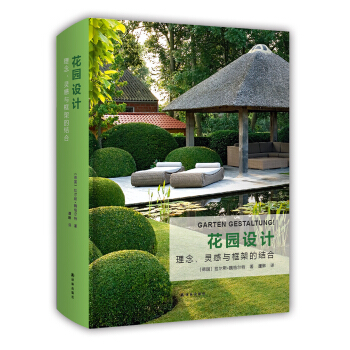
![人文主義時代的建築原理(原著第六版) [Architectural Principles In The Age Of Humanism] pdf epub mobi 電子書 下載](https://pic.tinynews.org/11828214/567d207aN65d48a3b.jpg)

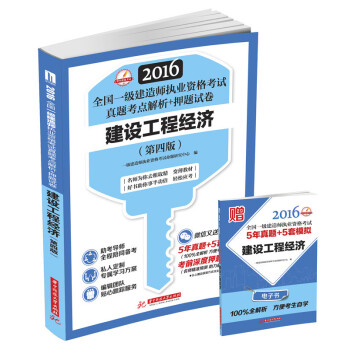
![建築設計基礎 [Architectural Design Basics] pdf epub mobi 電子書 下載](https://pic.tinynews.org/11852686/56931c4cNfca23017.jpg)

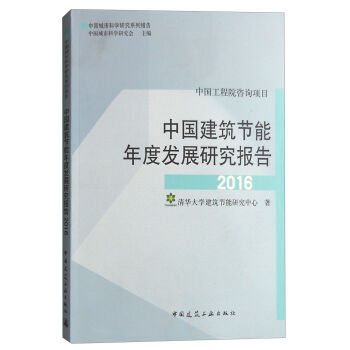


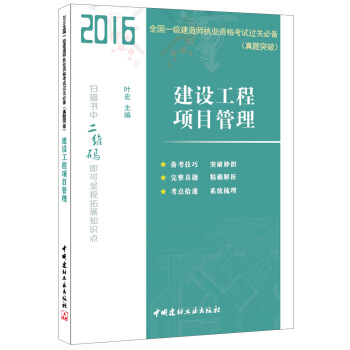
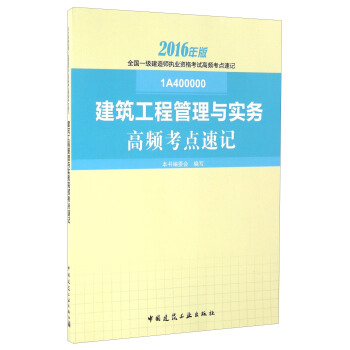

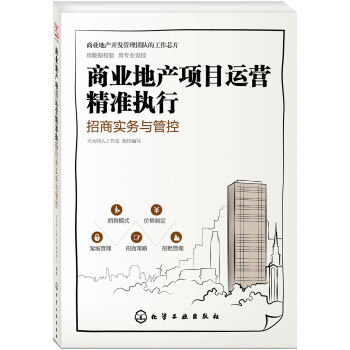

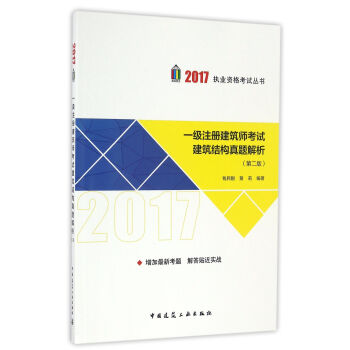
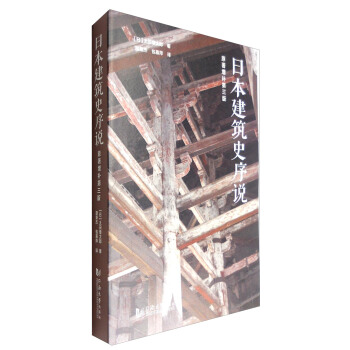
![中華人民共和國國傢標準(GB/T 50312-2016):綜閤布綫係統工程驗收規範 [Code for Engineering Acceptance of Generic Cabling System] pdf epub mobi 電子書 下載](https://pic.tinynews.org/12056369/58f49002N82c616cb.jpg)
